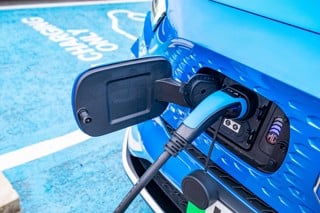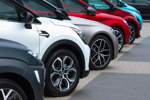By Philip Nothard, insight director at Cox Automotive Europe
As more electric vehicles (EVs) enter the used market, the dynamics within the marketplace are shifting.
By the end of the year, Cox Automotive forecasts predict that more than 1.8 million vehicles in the used car parc will be electric, which would represent a 2% increase on 2024.
EV transactions are rising rapidly, now accounting for around 21% of the used market. However, under the surface, challenges are emerging.
Residual value volatility
One such challenge is the significant variance between nearly new EVs and older models, between 3-5 years old.
On the one hand, we are seeing a rapid pace of depreciation in EVs under 24 months old, with these vehicles selling at 47% of their original cost new (OCN) to trade this year.
Meanwhile, EVs between 48 to 72 months old are performing particularly well, dropping only by 15%, and remain one of the fastest-selling segments.
For younger vehicles, aggressive manufacturer discounts are driving down the cost of these nearly new models, with many brand-new vehicles retailing for less than those in the used marketplace.
On the other hand, historic supply chain challenges squeeze the availability of the 3-5-year segment, helping them retain strong trade values.
While managing these fluctuations is a challenge for the industry, there are signs that prices are stabilising.
Across all fuel types, we are seeing values returning to more typical seasonal patterns and are cautiously optimistic that values in the electric market will follow a similar pattern.
This volatility does make strategic stock selection and strong retail pricing crucial to sustainability, especially within a supply-constrained environment.
Commercial vehicle attitudes hinder used market
Looking at commercial vehicles, the used market remains resilient. Manheim Auction Services saw sold volumes increase by 21% year-on-year in Q1 and improvements across days to sell and first-time conversions, indicating strong market health.
Diesel remains the dominant fuel type in the sector, as operators prioritise reliability and range.
While we have observed growth in electric vans across the wholesale market, with a 62.6% increase in electric van arrivals across Manheim sites in Q1, there are still roadblocks.
Buyer confidence is lacking as infrastructure concerns and cost sensitivity have hindered performance, as these vehicles achieved 88% of guide values and only four in 10 vans selling first time.
Unlike the passenger car market, commercial vehicles are largely driven by buyers purchasing vehicles to fulfil orders, who, on average, are more selective compared to car dealerships.
What does this mean for the fleet sector?
EVs remain a volatile segment while petrol and diesel vehicles continue to perform consistently.
These challenges leave fleet operators in a tricky position. On the one hand, the fleet market is one of the biggest sources of electric adoption, being driven by manufacturer supply and environmental, social, and governance (ESG) targets.
However, concerns are increasing about the viability of the used market with the volume of EVs set to return to a market where residual values are increasingly volatile.
This is particularly concerning for commercial vehicles, as the buyer attitudes lag far behind cars. This buyer segment is increasingly calling for improved infrastructure and battery technology, such as solid state, which in reality won’t be seen in the used market until closer to 2035.
This plethora of challenges is further compounded by rising reconditioning and logistics costs, which are further squeezing buyers’ margins. This makes for more risk-averse buyers, targeting assets that will help protect their profitability.
Closely monitoring evolving market dynamics and residual values will remain a crucial facet of successful disposal strategies, and a forensic approach to stock acquisition and pricing could make a significant difference to business performance in the next 12 months.
Taken from the first quarterly edition of Fleet News IQ.





















martinwinlow - 27/06/2025 14:14
Interesting to see that the Mitsubishi i-MiEV is still getting £2k for good condition used (it's no longer manufactured) despite being more than 12 years old albeit with comparatively low mileage. Is this going to continue to be a 'thing' or will EVs end up being as cheap to buy as ICEVs of similar age and mileage? They appear to have a heck of a long way to go...